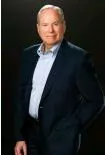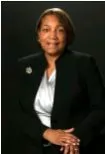The team of negotiators working on the Department of Education's proposals for substantially revising rules affecting the accreditation process and encouraging innovation will have to face a very basic problem: defining "student success."
The team of negotiators working on the Department of Education's proposals for substantially revising rules affecting the accreditation process and encouraging innovation will have to face a very basic problem: defining "student success." (See our blog post, Accreditation and Innovation Neg Reg Opens to Controversy over Significant ED Proposals) There are few topics that have so completely engaged higher education, both internally and among policy makers. In recent years, countless campus meetings, institutional studies, conference sessions and faculty discussions, not to mention legislative and congressional hearings and regulatory proposals, have focused on how to measure, evaluate and improve student success. Terms like "outcomes," "completion" and "gainful employment" are used, often interchangeably, as proxies for what constitutes student success and how it should be measured. Yet, the relevance of those measures, such as they are, to the reality of student success from the perspective of the students themselves remains uncertain.
In a recent white paper, Defining Student Success Data: Recommendations for Changing the Conversation, the largest of the regional accrediting commissions, the Higher Learning Commission, argues that the assumption there is a commonly accepted basis to measure student success is not only inaccurate, but also is one of the primary reasons why colleges and universities continue to struggle to develop strategies to address this issue. The HLC commissioners have sought to cast the discussion in a different light by asking an increasingly complex question: Who are today's learners, and what are they seeking?
While there is widespread discussion of innovative programs, multiple and rapidly evolving methods of delivering learning, including online, the growth of competency-based education and the importance of big data and evidence-driven practices, the commission paper notes the recognition of the changing landscape is less often reflected in the strategies employed to track, measure and define student success. Significantly, the paper observes that today's students engage with higher education in ways that have changed significantly in recent decades, notably the continuing trend that fewer students, particularly among 18- to 24-year-olds, actually complete an undergraduate degree – whether associate or baccalaureate – in the traditional two or four years of full-time study. Yet, the report observes that the higher education community and those who oversee its finances continue to see the completion of a degree program at a single institution within a specified timeframe as paramount evidence of student success.
The HLC paper makes a very strong statement: "Currently used completion metrics and approaches privilege not only certain types of learners, but also certain types of institutions and programs." The commission suggests a shift of focus – and hence the definition of student success – from completion metrics focused solely on institutions to a flexible framework that views success from the student perspective, one that is often framed as the desire to obtain skills and competencies that are valued in the marketplace, which may or may not lead to or require the completion of a conventional academic degree. The report observes that the emergence of boot camps, stackable credentials and micro-degrees may be indicative of the changing needs of students, employers and the larger society. Ultimately, the paper concludes, the institutional and public policy response must be determined by understanding learners and their needs and poses a series of questions to stimulate data-driven conversations about the current realities in which colleges and universities operate and the students that they serve. The HLC paper suggests that in answering these fundamental questions institutions will be able to formulate intentional, integrated and systematic strategies for student success. That, it argues, should enable the larger community, including the public and private sources that finance higher education, to make better sense of student success and which institutions are succeeding in its achievement.
Additional information on the HLC student success initiative will be found in the commission's Student Success Initiatives Link.


